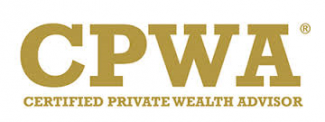
Doctors: This Retirement Plan Option Could Eliminate Your Tax Burden
by Mario Yngerto on Oct 23, 2017
MIAMI/CORAL GABLES, FL -- There are more than 800,000 active physicians in the United States. If you’re one of them, you’re likely focused on what’s good for the heart or mind or one of the 206 bones in the human body. But what are you doing to take care of your wallet and your future? More to the point, how, in 2017 and beyond, are you going to dramatically reduce income taxes, save for retirement and achieve asset protection?
The answer is simple, but likely something that’s never been discussed with you before: A Defined Benefit Plan. Also known as a pension plan.
Like many successful mid-career medical professionals with their own practice, you’re likely maxing out your personal 401(k), buying and depreciating equipment, and paying 4-5 employees (maybe even including them in a profit sharing plan). You’re still taking home more than $500,000 annually and yet you still got hit with a sizeable year-end tax bill. So what can you do?
What is a Defined Benefit Plan?
The first step is setting up a Defined Benefit Plan under the guidelines of the Employee Retirement Income Security Act (ERISA). This law is administered by the Department of Labor and controls most legal and functional aspects of retirement plans—including 401(k)s, which are also called Defined Contribution plans.
The main difference between a Defined Benefit (DB) or Pension Plan, and a Defined Contribution (DC) or 401(k) and similar plans (e.g. SEP-IRA), is that in the former, the employer makes the contribution to the employee’s retirement balance. In the latter, the employee makes the contribution, which may be fully or partially matched by the employer.
Pension Plans were historically popular and seen as a way to take care of employees through their retirement. But with recent funding shortfalls for large private and government plans, they have fallen in favor to DC plans.
The Hybrid Approach: Cash Balance Plans
For physicians, a Defined Benefit plan may still hold the greatest attraction—especially a “hybrid” style option that combines the best of DB and DC into what’s known as a Cash Balance Plan. As the practice owner, your contributions to a Cash Balance Plan are tax deductible and can significantly reduce your personal tax bill if other options (such as your own 401(k)) are already at their legal limits.
Perhaps even more importantly, your contributions to the plan on your own behalf now become protected from bankruptcy and creditors. These personal assets will also grow tax-deferred as part of a qualified ERISA plan. In the 2016 tax year, your maximum contribution to a Cash Balance Pension Plan could be as much as $137,908. In 2016, you can combine this Cash Balance contribution with your 401(k) contribution of up to $24,000 for more than $155,000 in tax-deferred retirement benefits. The contribution limits and personal tax benefit of this extra contribution are controlled by factors such as your age, years to retirement and the location of your practice.
However, compare this to your max 401(k) contributions in 2016, which would typically be limited at just $59,000.
Know the Risks
There are a few important risks to be aware of with Defined Benefit Cash Balance Plans. The main risk, when compared to traditional Defined Contribution 401(k) Plans, is that, as the business owner, you have a greater fiduciary responsibility over the assets. Not only must you act with prudence and make suitable investment choices for the Plan’s investments, you bear the responsibility of performance for the assets in your plan.
This performance is an assumed rate of return called the “interest-credentialing rate,” which can be pegged to some type of benchmark (e.g. Treasury Bond Yields) or may be set at a reasonable agreed-upon level, say 5-7 percent. In either scenario if the Plan’s investment return falls short, you are potentially responsible for additional contributions that make up the shortfall. For this reason, Cash Balance Plan sponsors often work with a qualified investment professional to help manage the Plan’s assets and potentially outsource some of this fiduciary liability.
As with your 401(k) or Profit Sharing Plan, you may need certain services, relationships and expertise to properly set up, design and administer your Cash Balance Plan. This is what we do at Genesis Wealth Management, Inc. It is our wish that this article serves as a small window of insight in to the art of the possible. We encourage you to reach out to us and explore how a Defined Benefit Plan may be appropriate for you and your practice.
Please Contact Me Directly At:
- Mario Yngerto
- (786) 393-6960
- myngerto@genesiswealth.org
In Conclusion
In total, however, Defined Benefits Cash Balance Plans should be strongly considered for physicianbusiness owners. These Plans can provide:
- Personal Asset Protection
- Additional Tax-Deferred Retirement Income
- Personal Tax Benefit
- Extra Benefit for Employees
- Deferring 1099 Income
For many of our clients these pros outweigh any of the logistical or other risk factors associated with this type of plan. For more information, please visit us at: http://www.genesiswealthmanagement.com/
Genesis Wealth Management, Inc. is a fee-only firm led by Mario Yngerto serving the Greater Miami, Coral Gables, Ft. Lauderdale and West Palm Beach area. Mario is a NAPFA Advisor and holds the CPWA®, CFP®, and ChFC designations. We provide Financial Planning and Investment Planning services to our clients utilizing the proven academic research behind Dimensional Fund Advisors. We adhere to the fiduciary standard of acting in the “best interest” of our clients and are only compensated by the fees paid for our investment advice—keeping us free of conflicts and accountable to our clients.




